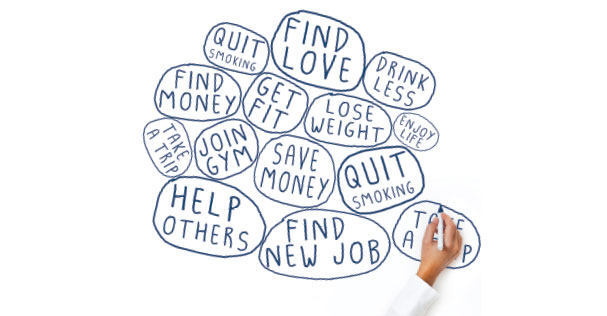by Marilynn Preston
Did you make any New Year’s Resolutions this year?
How’s it going?
Wait! Don’t hang up.
When you make a New Year’s Resolution, you are asking yourself to develop a new habit. Your choice: detox from processed foods; bike to work; walk the stairs instead of taking the escalator.
But new habits take time to take over, more time than you think, if you think about it at all. And if you’re not thinking about what’s involved in making change happen, then it’s no wonder you’ve forgotten what your 2014 resolutions even were. “I failed before; I’ve failed again; what am I missing?”
Welcome, Dear Readers, to the off ramp of the Wheel of Failure: “The Art of Making Change” is a continuation of last month’s column that invited you to tear up your list of New Year’s Resolutions and begin again.
In Jeremy Dean’s compelling book, “Making Habits, Breaking Habits: Why We Do Things, Why We Don’t, and How to Make Any Change Stick,” he assures us that new habits can be formed, but how long it takes varies greatly. On average, it takes 66 days for a new habit to take over your life.
Two months or more of everyday attention, writing it down, keeping focused, telling a friend, working with a coach or an “accountability partner.”
Why so long? Because neuroscientists know the brain has a mind of it’s own. It resists change and would rather nap in front of the TV.
When you mindfully decide to let go of an old habit and replace it with something less fried and sugary, something better for your sleep, digestion and overall health, you wake up to a new understanding of what drives your habits.
“Acting without thinking drives our habits,” reports Dean.
Scientists who study the psychology of self-control are so certain about this remote-control reality we all live in, they have given it a name.
It’s called “automaticity,” and learning to move through it and act from a place that is more authentic to your personal vision of health and wellness paves the way for successful change.
And so does:
ACTING ON WHAT YOU VALUE.
Authentic, long-lasting change happens more often when you first create a visualization, a detailed mental picture of who you are, where you are, what you feel when you see yourself living a healthier, happier life.
“I see myself with my husband, hiking in Florida and camping over night with our grandchildren. I love them to bits and they love being with me. I feel fit, strong and safe … ”
What you value will express itself in your personal wellness vision. Make it specific; make it true. You can make this a DIY project, or recruit a close friend, or consult with a local wellness coach. As Obamacare catches on, they’ll be more and more available. And affordable. I hope.
SET GOALS, STAY POSITIVE, BE PATIENT.
Once your wellness vision is created, you have a target to aim for. Next, you’ll want to create the small, realistic goals that will get you there: week-by-week. Change is not linear. Expect setbacks and delays but avoid despair.
In fact, stay very, very positive. That’s what all the research shows. Don’t focus on what you didn’t do; celebrate what you did do. Beating yourself up – the selfie of trash talking – is counterproductive to lasting change.
Keep in mind the 66 days it takes for a new habit to take hold. An exercise habit takes even longer. A recent research study – handpicked by me to prove my point – shows that people who write down a detailed, step-by-step plan are 50 percent more likely to achieve their goals.
Fifty percent is huge!
KEEP A JOURNAL.
Writing down your detailed game plan and keeping track of your accomplishments is what puts you in the moment. That’s how we break free from the limitations of “automaticity.”
To support the lifestyle change you’re making, it helps to write down – every day – three things you’re grateful for. Every night, write down three things you did well that day. (Sounds hokey, but it works.)
Now you know a few new things about how change happens. The rest, is up to you.
Marilynn Preston is the creator of Energy Express, the longest-running syndicated fitness column in the country. She has a website, marilynnpreston.com, and welcomes reader questions, which can be sent to MyEnergyExpress@aol.com.









